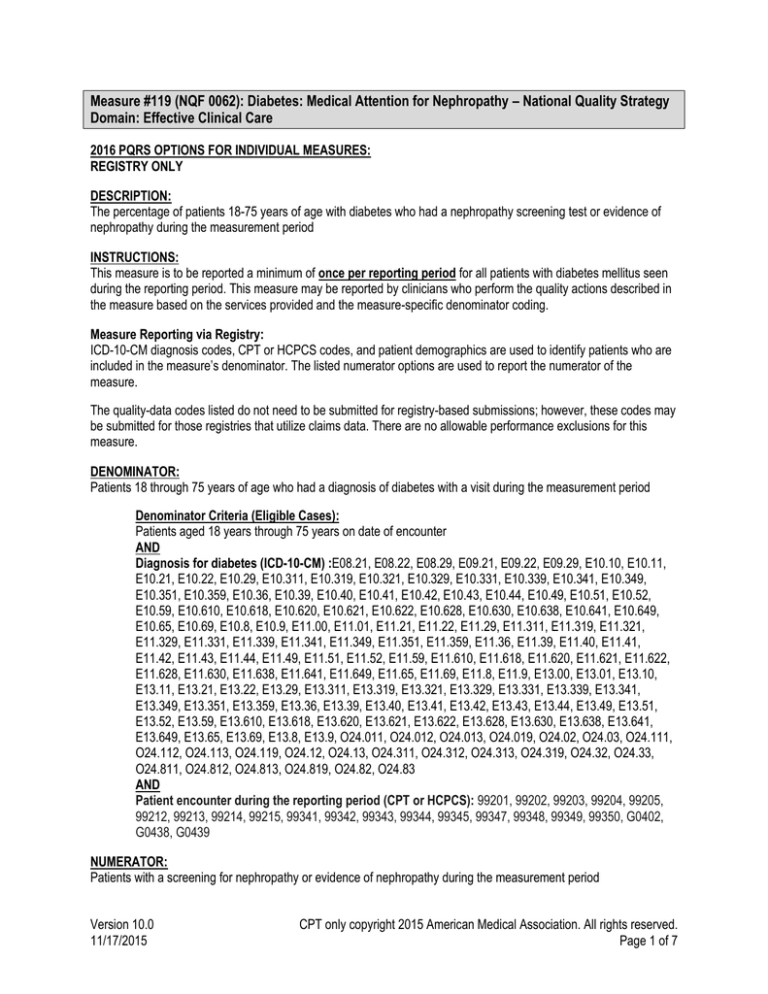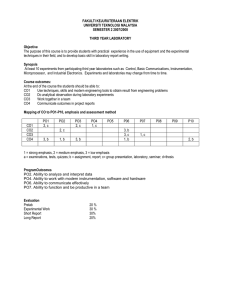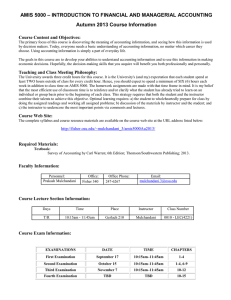
Measure #119 (NQF 0062): Diabetes: Medical Attention for Nephropathy – National Quality Strategy
Domain: Effective Clinical Care
2016 PQRS OPTIONS FOR INDIVIDUAL MEASURES:
REGISTRY ONLY
DESCRIPTION:
The percentage of patients 18-75 years of age with diabetes who had a nephropathy screening test or evidence of
nephropathy during the measurement period
INSTRUCTIONS:
This measure is to be reported a minimum of once per reporting period for all patients with diabetes mellitus seen
during the reporting period. This measure may be reported by clinicians who perform the quality actions described in
the measure based on the services provided and the measure-specific denominator coding.
Measure Reporting via Registry:
ICD-10-CM diagnosis codes, CPT or HCPCS codes, and patient demographics are used to identify patients who are
included in the measure’s denominator. The listed numerator options are used to report the numerator of the
measure.
The quality-data codes listed do not need to be submitted for registry-based submissions; however, these codes may
be submitted for those registries that utilize claims data. There are no allowable performance exclusions for this
measure.
DENOMINATOR:
Patients 18 through 75 years of age who had a diagnosis of diabetes with a visit during the measurement period
Denominator Criteria (Eligible Cases):
Patients aged 18 years through 75 years on date of encounter
AND
Diagnosis for diabetes (ICD-10-CM) :E08.21, E08.22, E08.29, E09.21, E09.22, E09.29, E10.10, E10.11,
E10.21, E10.22, E10.29, E10.311, E10.319, E10.321, E10.329, E10.331, E10.339, E10.341, E10.349,
E10.351, E10.359, E10.36, E10.39, E10.40, E10.41, E10.42, E10.43, E10.44, E10.49, E10.51, E10.52,
E10.59, E10.610, E10.618, E10.620, E10.621, E10.622, E10.628, E10.630, E10.638, E10.641, E10.649,
E10.65, E10.69, E10.8, E10.9, E11.00, E11.01, E11.21, E11.22, E11.29, E11.311, E11.319, E11.321,
E11.329, E11.331, E11.339, E11.341, E11.349, E11.351, E11.359, E11.36, E11.39, E11.40, E11.41,
E11.42, E11.43, E11.44, E11.49, E11.51, E11.52, E11.59, E11.610, E11.618, E11.620, E11.621, E11.622,
E11.628, E11.630, E11.638, E11.641, E11.649, E11.65, E11.69, E11.8, E11.9, E13.00, E13.01, E13.10,
E13.11, E13.21, E13.22, E13.29, E13.311, E13.319, E13.321, E13.329, E13.331, E13.339, E13.341,
E13.349, E13.351, E13.359, E13.36, E13.39, E13.40, E13.41, E13.42, E13.43, E13.44, E13.49, E13.51,
E13.52, E13.59, E13.610, E13.618, E13.620, E13.621, E13.622, E13.628, E13.630, E13.638, E13.641,
E13.649, E13.65, E13.69, E13.8, E13.9, O24.011, O24.012, O24.013, O24.019, O24.02, O24.03, O24.111,
O24.112, O24.113, O24.119, O24.12, O24.13, O24.311, O24.312, O24.313, O24.319, O24.32, O24.33,
O24.811, O24.812, O24.813, O24.819, O24.82, O24.83
AND
Patient encounter during the reporting period (CPT or HCPCS): 99201, 99202, 99203, 99204, 99205,
99212, 99213, 99214, 99215, 99341, 99342, 99343, 99344, 99345, 99347, 99348, 99349, 99350, G0402,
G0438, G0439
NUMERATOR:
Patients with a screening for nephropathy or evidence of nephropathy during the measurement period
Version 10.0
11/17/2015
CPT only copyright 2015 American Medical Association. All rights reserved.
Page 1 of 7
Numerator Instructions: This measure is looking for a nephropathy screening test or evidence of
nephropathy.
Numerator Options:
Performance Met:
Positive microalbuminuria test result documented and
reviewed (3060F)
OR
Performance Met:
Negative microalbuminuria test result documented and
reviewed (3061F)
OR
Performance Met:
Positive macroalbuminuria test result documented and
reviewed (3062F)
OR
Performance Met:
Documentation of treatment for nephropathy (eg, patient
receiving dialysis, patient being treated for ESRD, CRF,
ARF, or renal insufficiency, any visit to a nephrologist)
(3066F)
OR
Performance Met:
OR
Patient receiving angiotensin converting enzyme (ACE)
inhibitor or angiotensin receptor blocker (ARB) therapy
(G8506)
Performance Not Met:
Nephropathy screening was not performed, reason not
otherwise specified (3060F or 3061F or 3062F with 8P)
RATIONALE:
Diabetes mellitus (diabetes) is a group of diseases characterized by high blood glucose levels caused by the body's
inability to correctly produce or utilize the hormone insulin (National Institute of Diabetes and Digestive and Kidney
Diseases 2011). It is recognized as a leading cause of death and disability in the U.S. and is highly underreported as
a cause of death (National Institute of Diabetes and Digestive and Kidney Diseases 2011). Diabetes may cause lifethreatening, life-ending or life-altering complications, including end-stage kidney disease. Diabetes is the primary
cause of kidney failure, accounting for 44 percent of newly diagnosed cases in 2005 (National Institute of Diabetes
and Digestive and Kidney Diseases 2011). Clinical guidelines recommend regular testing to evaluate urine albumin
excretions and serum creatinine and the estimated glomerular filtration rate derived from serum creatinine, in addition
to comparing measurements when screening for chronic kidney disease (American Diabetes Association 2009;
American Association of Clinical Endocrinologists 2007).
CLINICAL RECOMMENDATION STATEMENTS:
American Diabetes Association (2009):
Perform an annual test to assess urine albumin excretion in type 1 diabetic patients with diabetes duration
of >=5 years and in all type 2 diabetic patients, starting at diagnosis. (Level of Evidence E)
Measure serum creatinine at least annually in all adults with diabetes regardless of the degree of urine
albumin excretion. The serum creatinine should be used to estimate GFR and stage the level of chronic
kidney disease (CKD), if present. (Level of Evidence E)
In the treatment of the nonpregnant patient with micro- or macroalbuminuria, either ACE inhibitors or ARBs
should be used. (Level of Evidence A)
American Association of Clinical Endocrinologists (2007): Screen all patients with diabetes mellitus for chronic kidney
disease annually; screening should begin 5 years after diagnosis in patients with Type 1 diabetes mellitus (T1DM)
and at the time of diagnosis in patients with Type 2 diabetes mellitus (T2DM). Testing includes:
Version 10.0
11/17/2015
CPT only copyright 2015 American Medical Association. All rights reserved.
Page 2 of 7
Measurement of albumin-to-creatinine ratio in a spot urine specimen and measurement of the estimated
glomerular filtration rate derived from serum creatinine
The following are diagnostic criteria for chronic kidney disease:
Estimated glomerular filtration rate <60 mL/min/1.73 m2 or albumin-to-creatinine ratio >=30 mg
albumin/g creatinine
Microalbuminuria >=30 mg albumin/g creatinine
Macroalbuminuria >=300 mg albumin/g creatinine (Grade A)
Prescribe an angiotensin-converting enzyme inhibitor or an angiotensin receptor blocker in the
antihypertensive regimen in the absence of contraindications. (Grade A)
California Healthcare Foundation/American Geriatrics Society (2003): A test for the presence of microalbumin should
be performed at diagnosis in patients with type 2 diabetes mellitus. After the initial screening and in the absence of
previously demonstrated macro- or microalbuminuria, a test for the presence of microalbumin should be performed
annually. (Level III, Grade A)
COPYRIGHT:
These performance measures were developed and are owned by the National Committee for Quality Assurance
("NCQA"). These performance measures are not clinical guidelines and do not establish a standard of medical care.
NCQA makes no representations, warranties, or endorsement about the quality of any organization or physician that
uses or reports performance measures and NCQA has no liability to anyone who relies on such measures. NCQA
holds a copyright in this measure and can rescind or alter this measure at any time. Users of the measure shall not
have the right to alter, enhance, or otherwise modify the measure and shall not disassemble, recompile, or reverse
engineer the source code or object code relating to the measure. Anyone desiring to use or reproduce the measure
without modification for a noncommercial purpose may do so without obtaining any approval from NCQA. All
commercial uses must be approved by NCQA and are subject to a license at the discretion of NCQA. Use by health
care providers in connection with their own practices is not commercial use. A "commercial use" refers to any sale,
license, or distribution of a measure for commercial gain, or incorporation of a measure into any product or service
that is sold, licensed, or distributed for commercial gain, even if there is no actual charge for inclusion of the
measure. ©2004-2016 National Committee for Quality Assurance, all rights reserved.
Performance measures developed by NCQA for CMS may look different from the measures solely created and
owned by NCQA.
CPT® contained in the Measures specifications is copyright 2004-2015 American Medical Association.
Version 10.0
11/17/2015
CPT only copyright 2015 American Medical Association. All rights reserved.
Page 3 of 7
Version 10.0
11/17/2015
CPT only copyright 2015 American Medical Association. All rights reserved.
Page 4 of 7
2016 Registry Individual Measure Flow
PQRS #119 NQF #0062: Diabetes: Medical Attention for Neuropathy
Please refer to the specific section of the Measure Specification to identify the denominator and numerator
information for use in reporting this Individual Measure.
1. Start with Denominator
2. Check Patient Age:
a. If Age equal to 18 thru 75 years of age on Date of Service equals No during the measurement period, do
not include in Eligible Patient Population. Stop Processing.
b. If Age equal to 18 thru 75 years of age on Date of Service equals Yes during the measurement period,
proceed to check Patient Diagnosis.
3. Check Patient Diagnosis:
a. If Diagnosis of Diabetes as Listed in the Denominator equals No, do not include in Eligible Patient
Population. Stop Processing.
b. If Diagnosis of Diabetes as Listed in the Denominator equals Yes, proceed to check Encounter
Performed.
4. Check Encounter Performed:
a. If Encounter as Listed in the Denominator equals No, do not include in Eligible Patient Population. Stop
Processing.
b. If Encounter as Listed in the Denominator equals Yes, include in the Eligible population.
5. Denominator Population:
a. Denominator population is all Eligible Patients in the denominator. Denominator is represented as
Denominator in the Sample Calculation listed at the end of this document. Letter d equals 8 patients in
the sample calculation.
6. Start Numerator
7. Check Positive Microalbuminuria Test Result Documented and Reviewed:
a. If Microalbuminuria Test Result Documented and Reviewed equals Yes, include in Reporting Met and
Performance Met.
b. Reporting Met and Performance Met letter is represented in the Reporting Rate and Performance Rate in
the Sample Calculation listed at the end of this document. Letter a1 equals 1 patient in Sample
Calculation.
c. If Microalbuminuria Test Result Documented and Reviewed equals No, proceed to Negative
Microalbuminuria Test Result Documented and Reviewed.
8. Check Negative Microalbuminuria Test Result Documented and Reviewed:
a. If Negative Microalbuminuria Test Result Documented and Reviewed equals Yes, include in Reporting
Met and Performance Met.
Version 10.0
11/17/2015
CPT only copyright 2015 American Medical Association. All rights reserved.
Page 5 of 7
b. Reporting Met and Performance Met letter is represented in the Reporting Rate in the Sample Calculation
listed at the end of this document. Letter a2 equals 1 patient in the Sample Calculation.
c. If Negative Microalbuminuria Test Result Documented and Reviewed equals No, proceed to Positive
Macroalbuminuria Test Result Documented and Reviewed.
9. Check Positive Macroalbuminuria Test Result Documented and Reviewed:
a. If Positive Macroalbuminuria Test Result Documented and Reviewed equals Yes, include in Reporting
Met and Performance Met.
b. Reporting Met and Performance Met letter is represented in the Reporting Rate in the Sample Calculation
listed at the end of this document. Letter a3 equals 1 patient in the Sample Calculation.
c. If Positive Macroalbuminuria Test Result Documented and Reviewed equals No, proceed to
Documentation of Treatment for Nephropathy.
10. Check Documentation of Treatment for Nephropathy:
a. If Documentation of Treatment for Nephropathy equals Yes, include in the Reporting Met and
Performance Met.
b. Reporting Met and Performance Met letter is represented in the Reporting Rate in the Sample Calculation
listed at the end of this document. Letter a4 equals 1 patient in the Sample Calculation.
c. If Documentation of Treatment for Nephropathy equals No, proceed to Patient Receiving ACE Inhibitor or
ARB Therapy.
11. Check Patient Receiving ACE Inhibitor or ARB Therapy:
a. If Patient Receiving ACE Inhibitor or ARB Therapy equals Yes, include in the Reporting Met and
Performance Met.
b. Reporting Met and Performance Met letter is represented in the Reporting Rate in the Sample Calculation
listed at the end of this document. Letter a5 equals 0 patients in the Sample Calculation.
c. If Patient Receiving ACE Inhibitor or ARB Therapy equals No, proceed to Nephropathy Screening Not
Performed, Reason Not Otherwise Specified.
12. Check Nephropathy Screening Not Performed, Reason Not Otherwise Specified:
a. If Nephropathy Screening Not Performed, Reason Not Otherwise Specified equals Yes, include in the
Reporting Met and Performance Not Met.
b. Reporting Met and Performance Not Met letter is represented in the Reporting Rate in the Sample
Calculation listed at the end of this document. Letter c equals 3 patients in the Sample Calculation.
c. If Nephropathy Screening Not Performed, Reason Not Otherwise Specified equals No, proceed to
Reporting Not Met.
13. Check Reporting Not Met:
a. If Reporting Not Met equals No, Quality Data Code or equivalent not reported. 1 patient has been
subtracted from the reporting numerator in the sample calculation.
Version 10.0
11/17/2015
CPT only copyright 2015 American Medical Association. All rights reserved.
Page 6 of 7
Version 10.0
11/17/2015
CPT only copyright 2015 American Medical Association. All rights reserved.
Page 7 of 7





